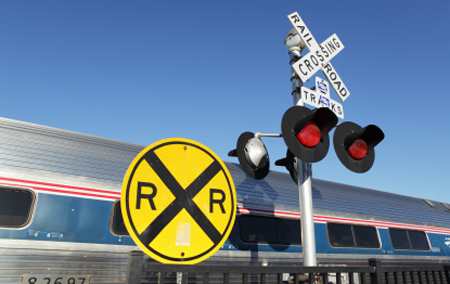Notices may soon start appearing at train stations around the United States warning of possible service disruptions as states struggle to finalize funding agreements with Amtrak. All "state-supported" Amtrak routes -- those shorter than 750 miles -- are up against an October 16 deadline to come up with state funds to support passenger rail operations under the 2008 PRIIA law. So far, only seven out of 19 agreements in 15 states with state-supported lines have hammered out final agreements.

Under Section 209 of the Passenger Rail Investment and Improvement Act, "states will pay more, [though] they will not pay 100 percent," said Amtrak spokesperson Steve Kulm. Amtrak will continue to pay roughly 13 percent for state-supported routes, he said, but the amount will vary by route.
Most states seem on track to reach an agreement with Amtrak in time, although some states, including Massachusetts and Connecticut, are still negotiating and may reach out to the Federal Railroad Administration for arbitration.
Indiana faces the most imminent threat to rail service, as Governor Mike Pence appears to be balking at the $3 million needed to maintain the Hoosier Line between Indianapolis and Chicago. The service, which makes one round trip four days a week, also serves a number of small towns and cities. The other three days of the week, Indianapolis-Chicago service is provided by the Cardinal Line, which runs between New York and Chicago and is not facing cuts. Rail advocates are troubled at the prospect of losing daily service, which would diminish the usefulness of the Chicago to Indianapolis route.
About 37,000 passengers use the line annually, costing the federal government about $3.1 million last year, according to WICB Indianapolis. Right now it appears state leaders in Indiana aren't willing to take on that expense.
“Our position on this is that we’ve not been interested in investing in this solely, but if communities along the path are interested in investing in this, it’s a possibility,” Will Wingfield, a spokesman for the Indiana Department of Transportation, told the Post-Tribune.
Smaller local governments may want the train, but they're not in a position to shoulder the cost. Stephen Wood, Mayor of Rensselaer, said his town of 6,000 can't afford to take on the expense, although they value the service.
"The communities along that route really like that train," said Dan Johnson of the Midwest High Speed Rail Association. "They want it to grow. They want three or four trains a day because they don’t want to be isolated."
The Midwest High Speed Rail Association is working with locals to "save the Hoosier line." Indiana rail supporters are also concerned if the Hoosier shuts down it could affect an Amtrak repair facility in Beech Grove, which employs 550 people, on the south side of Indianapolis.





